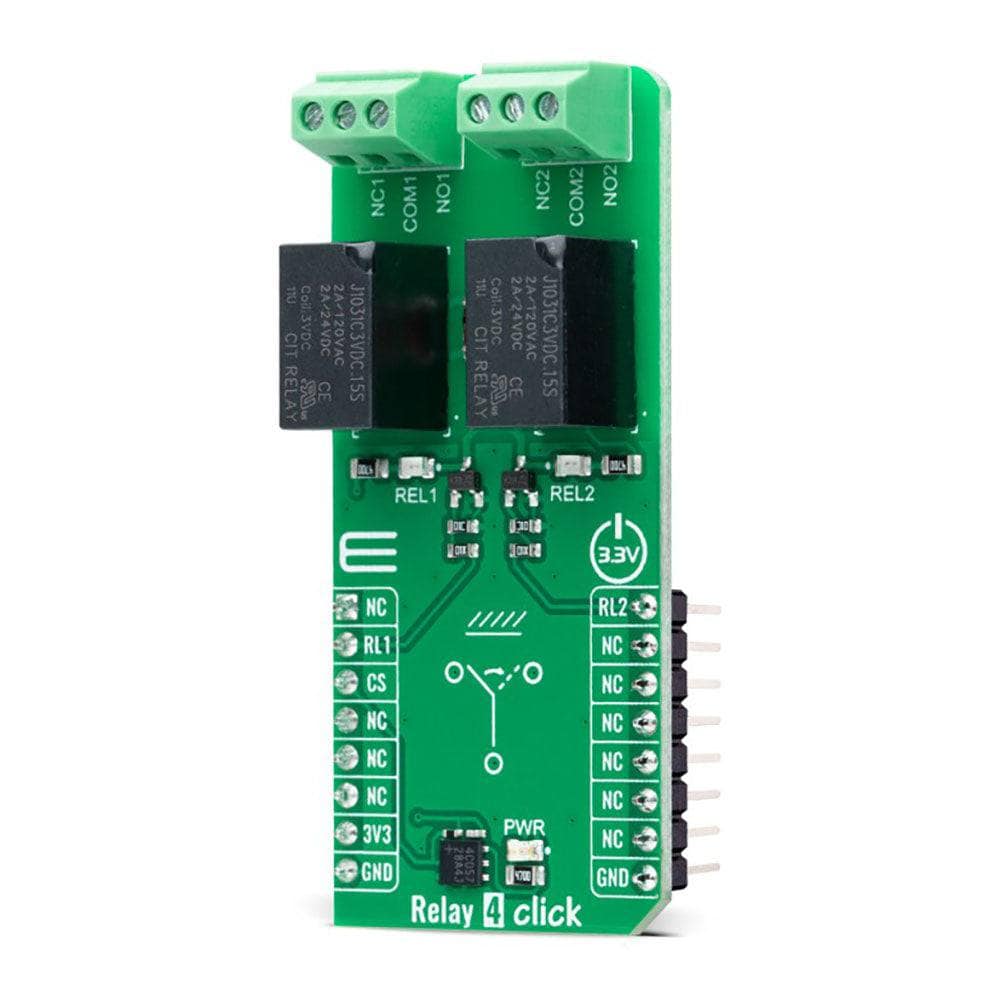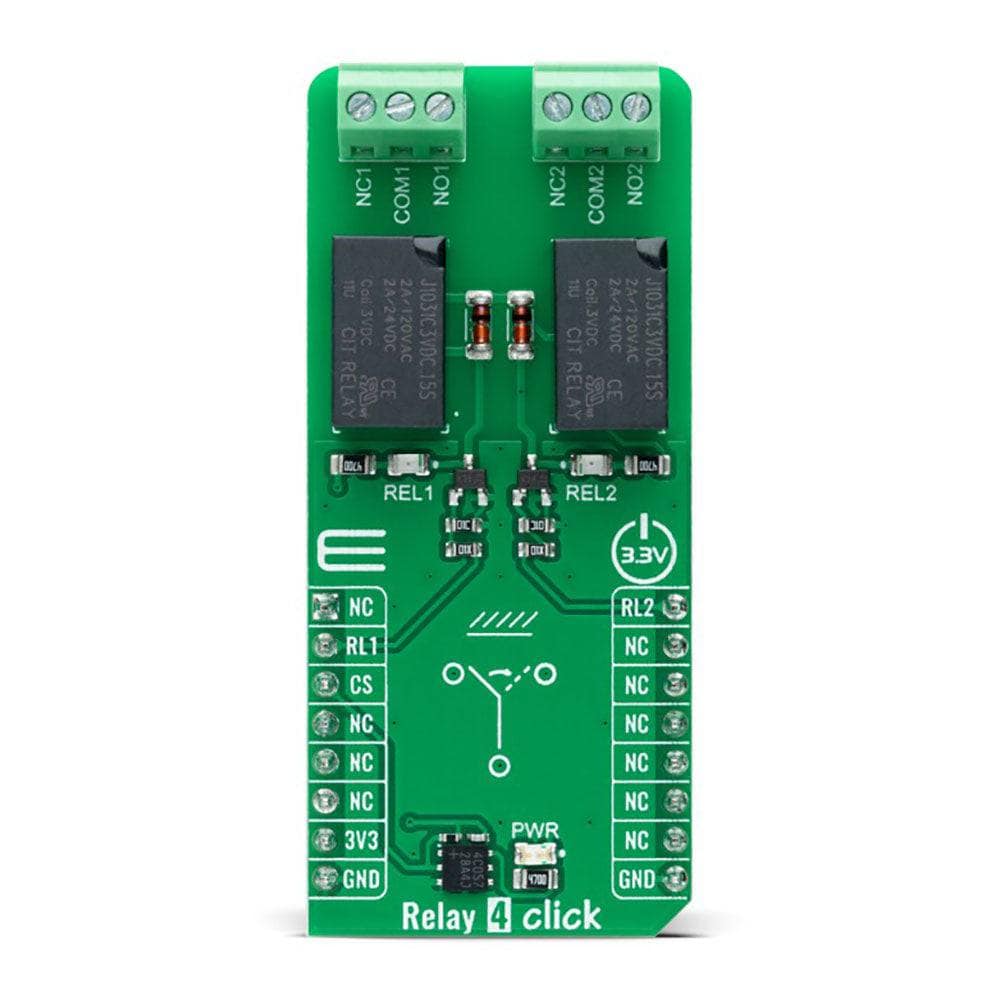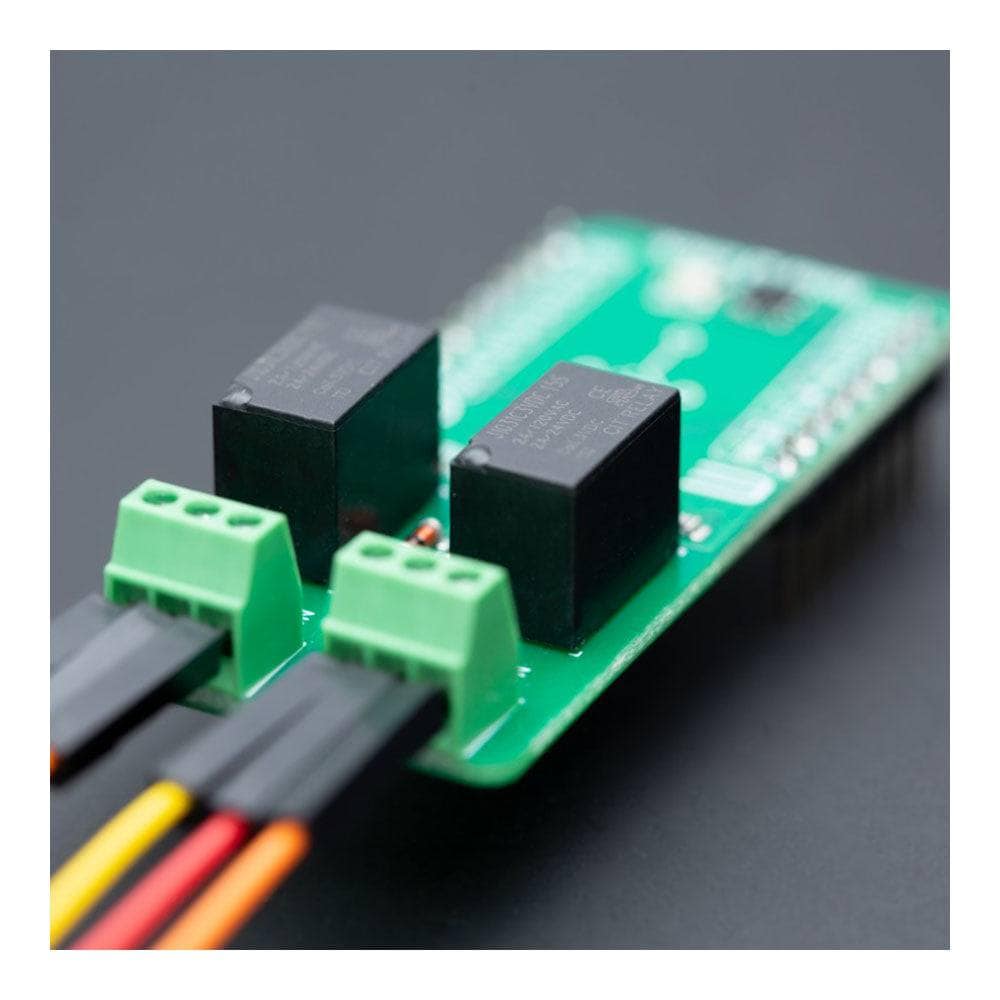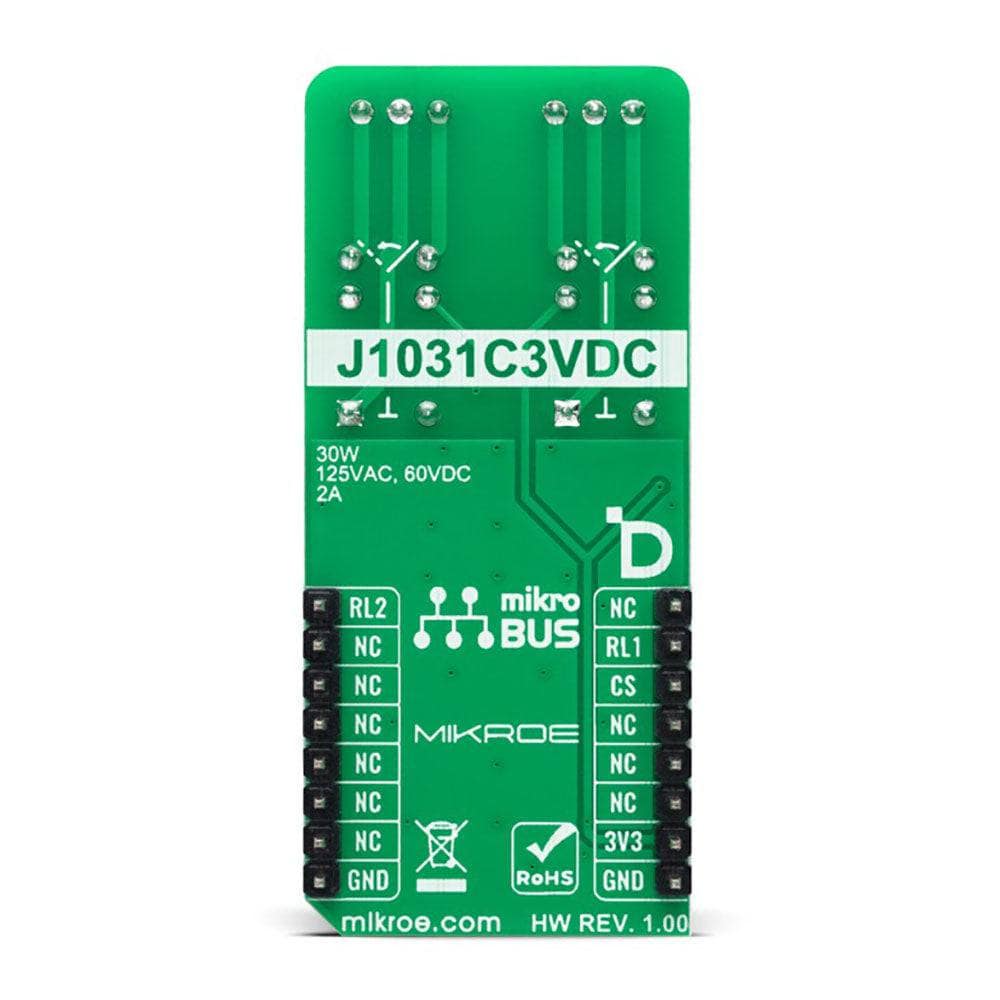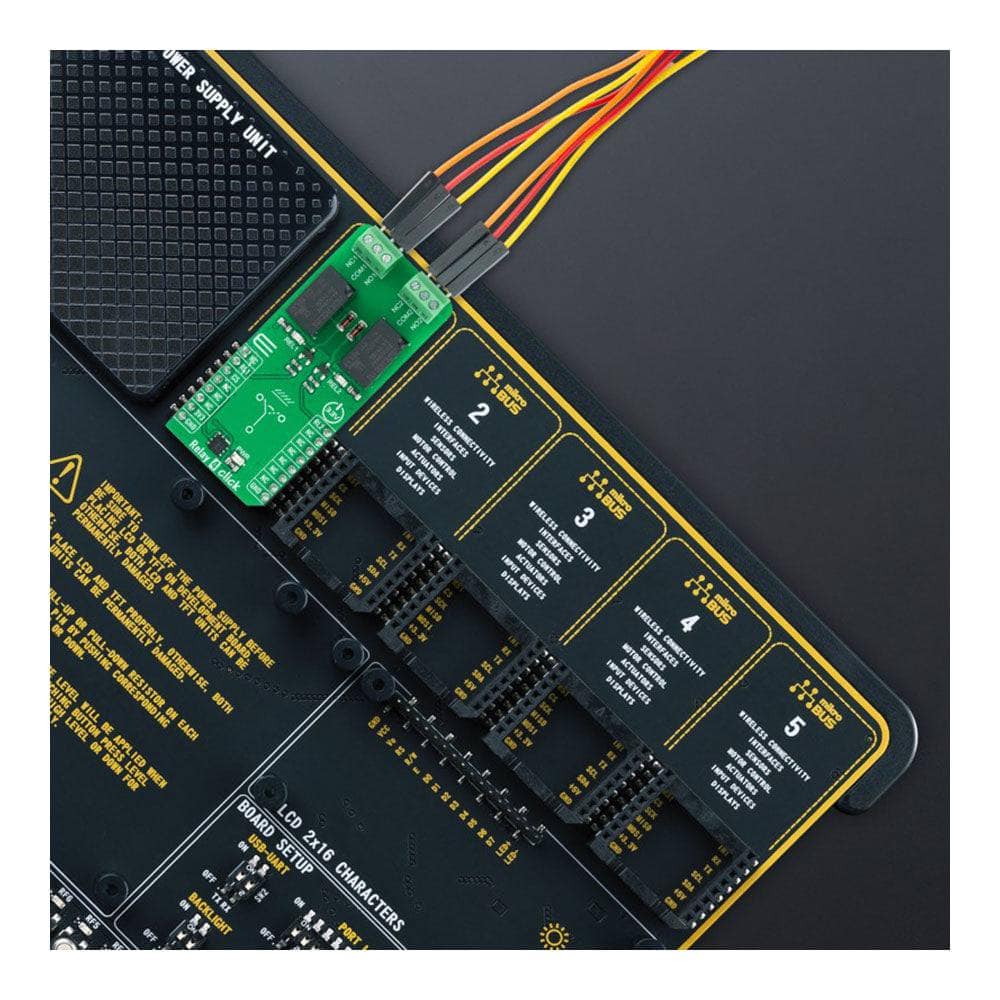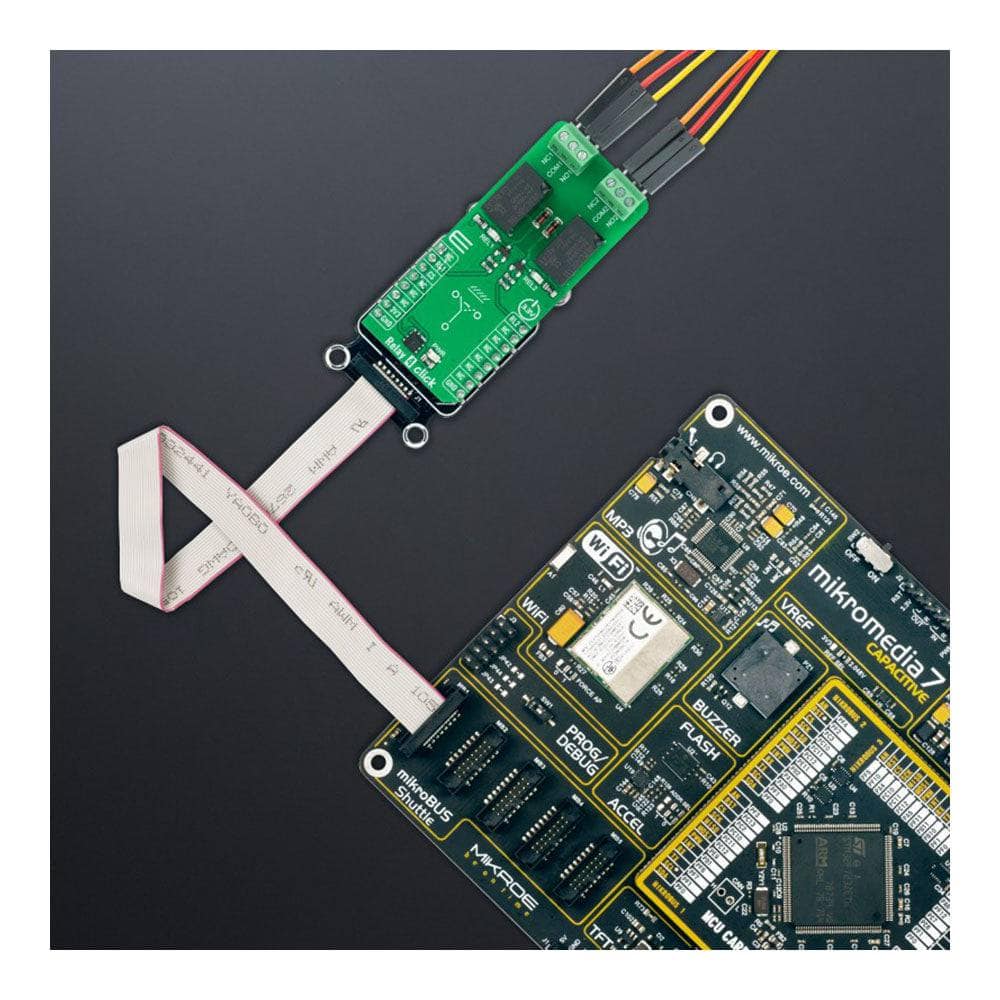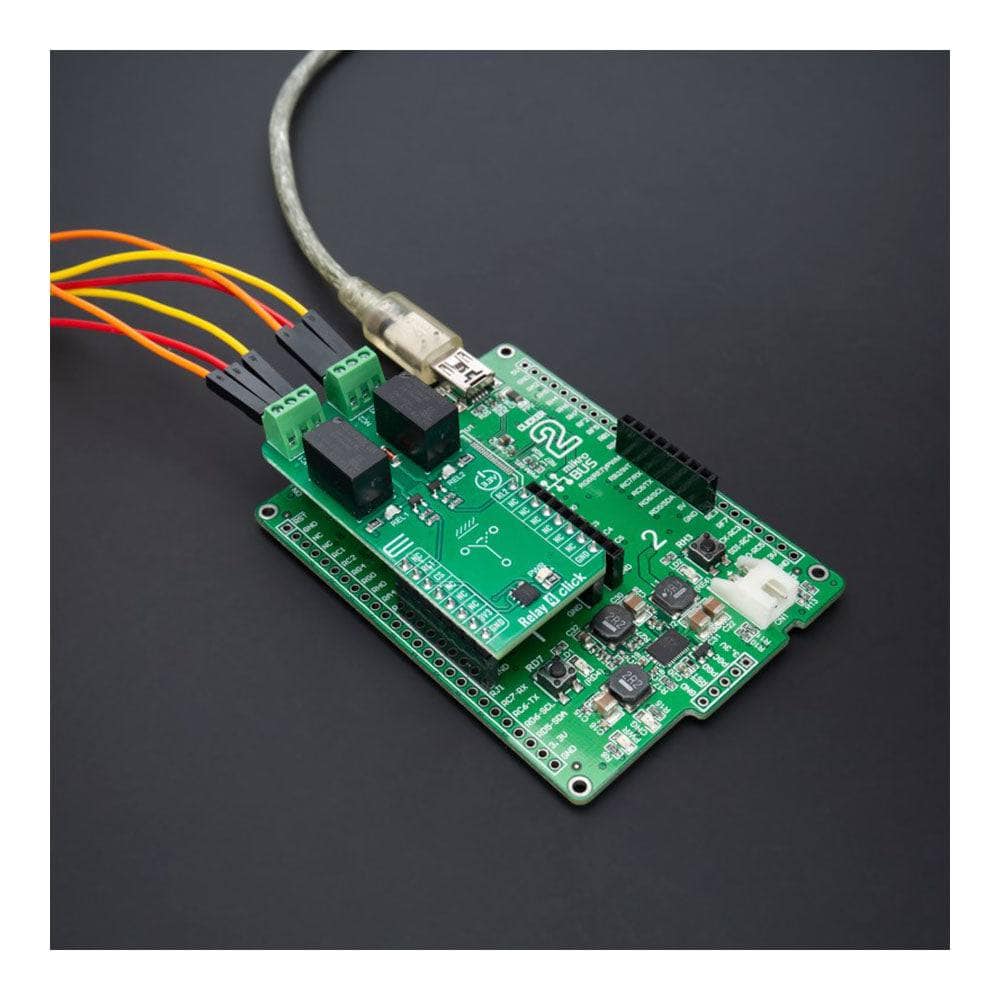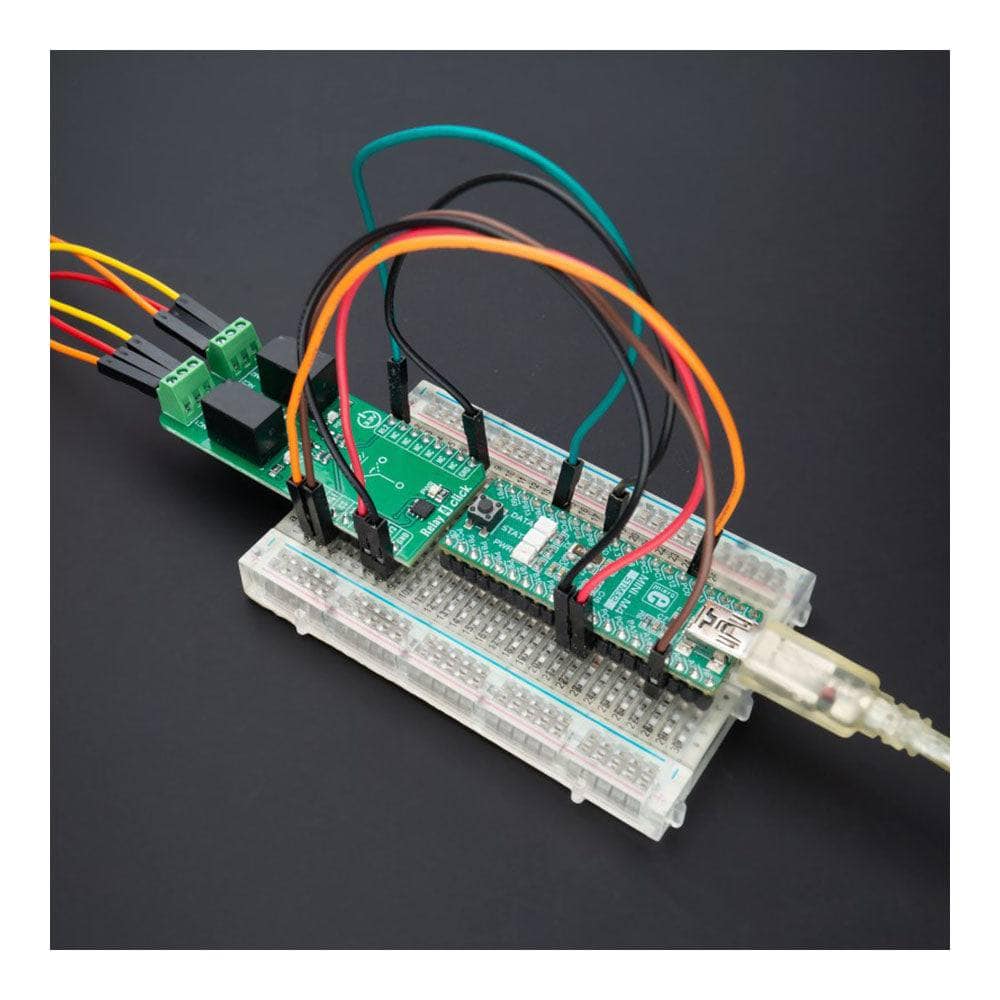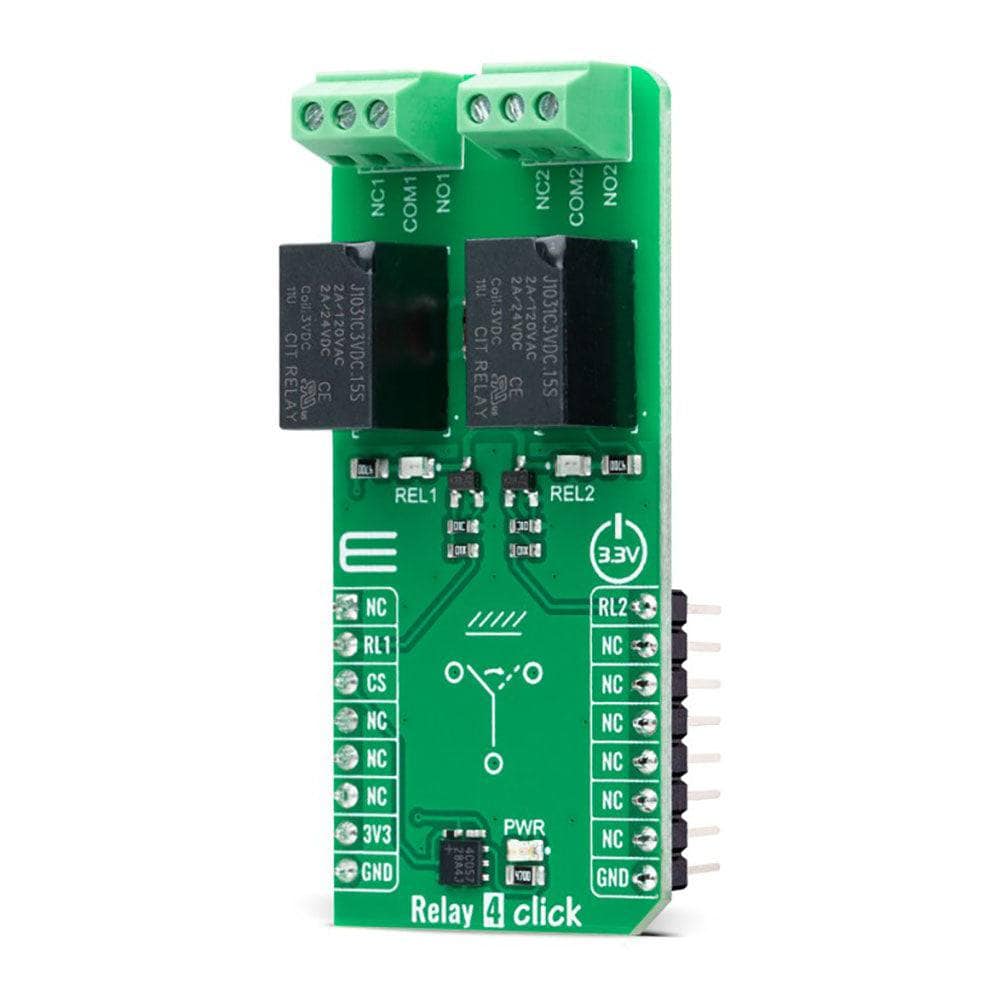
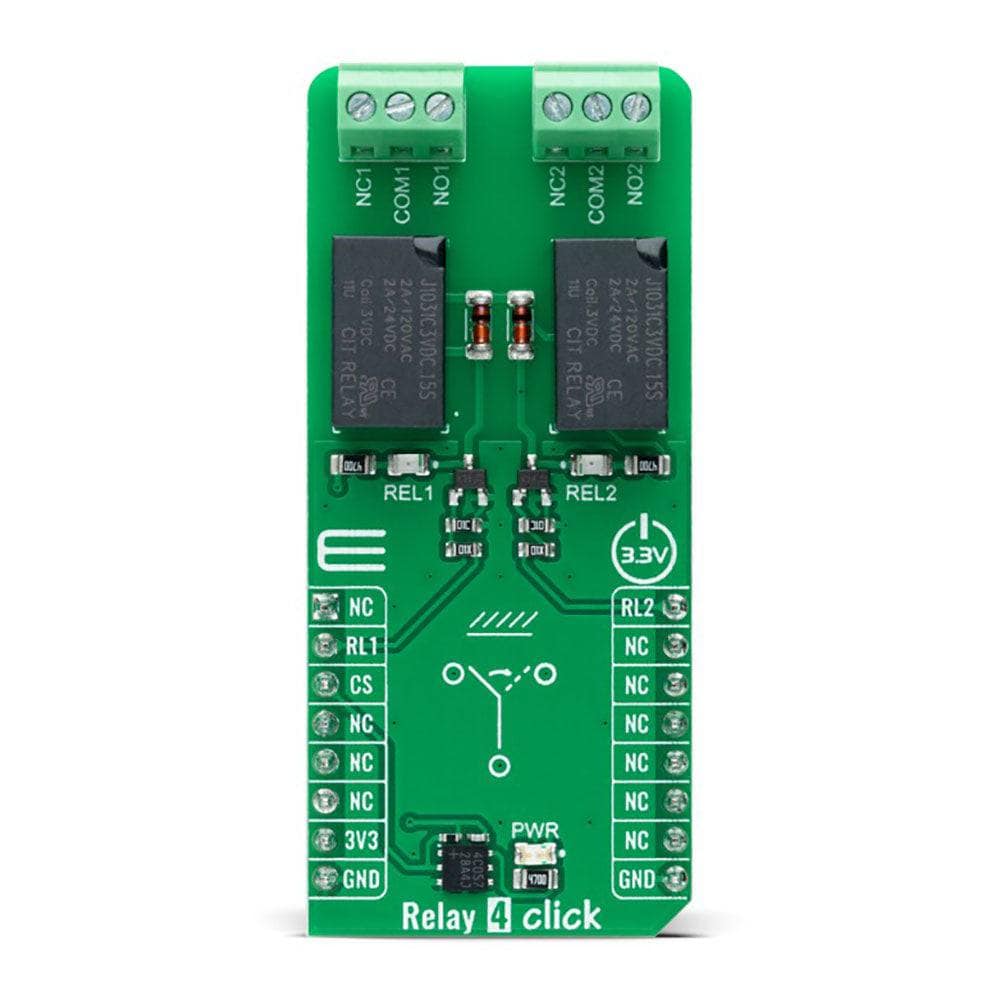
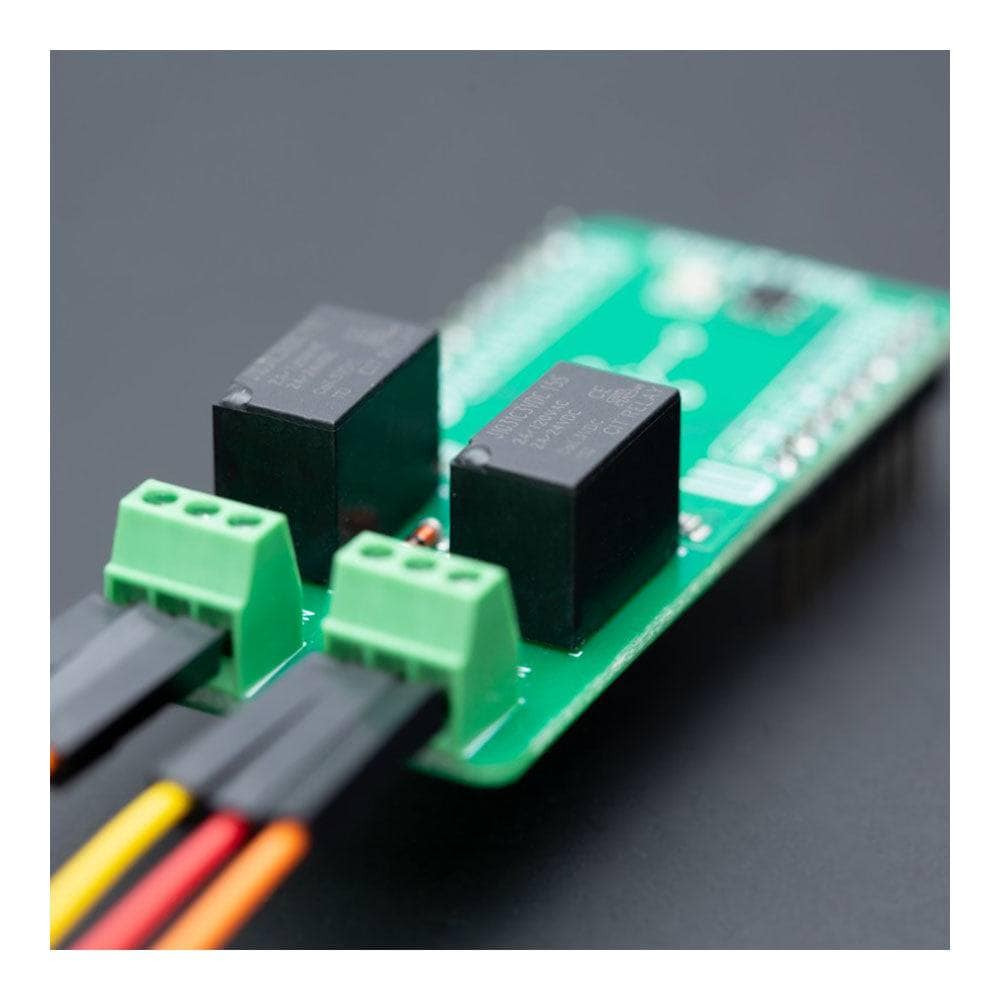
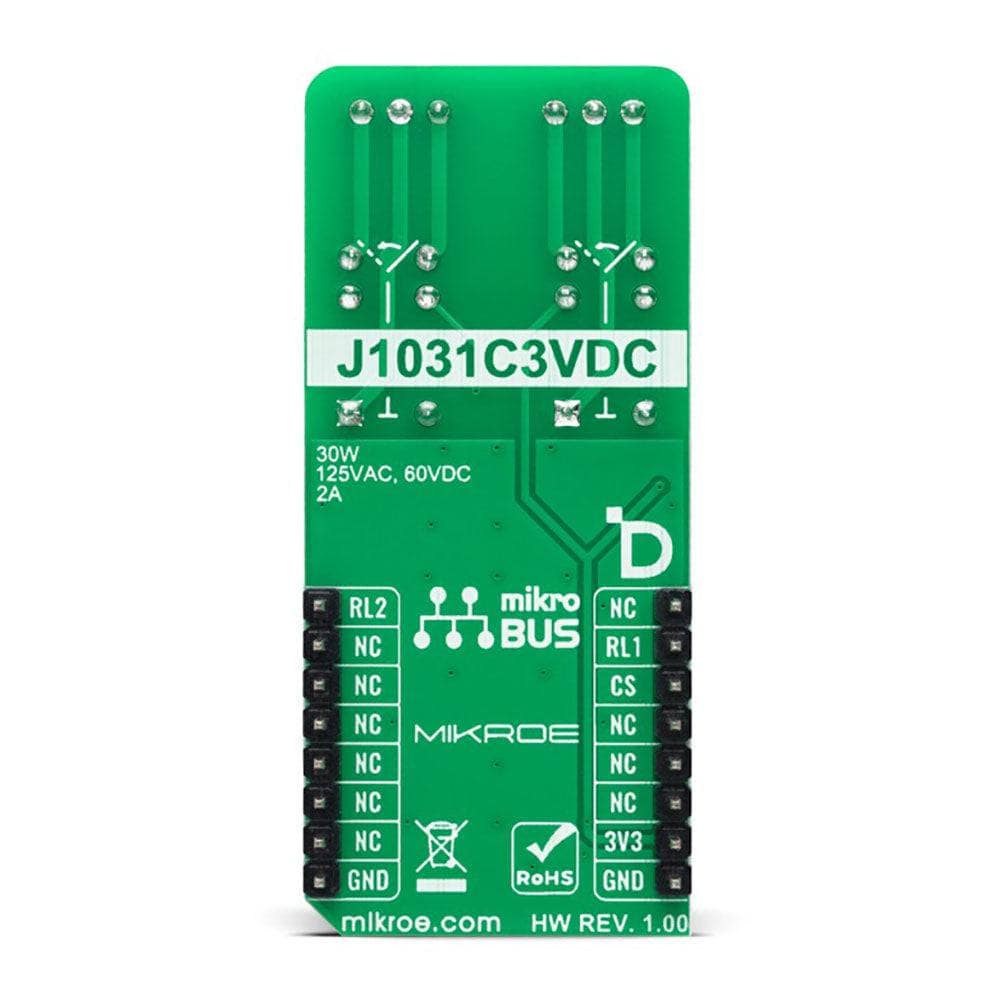
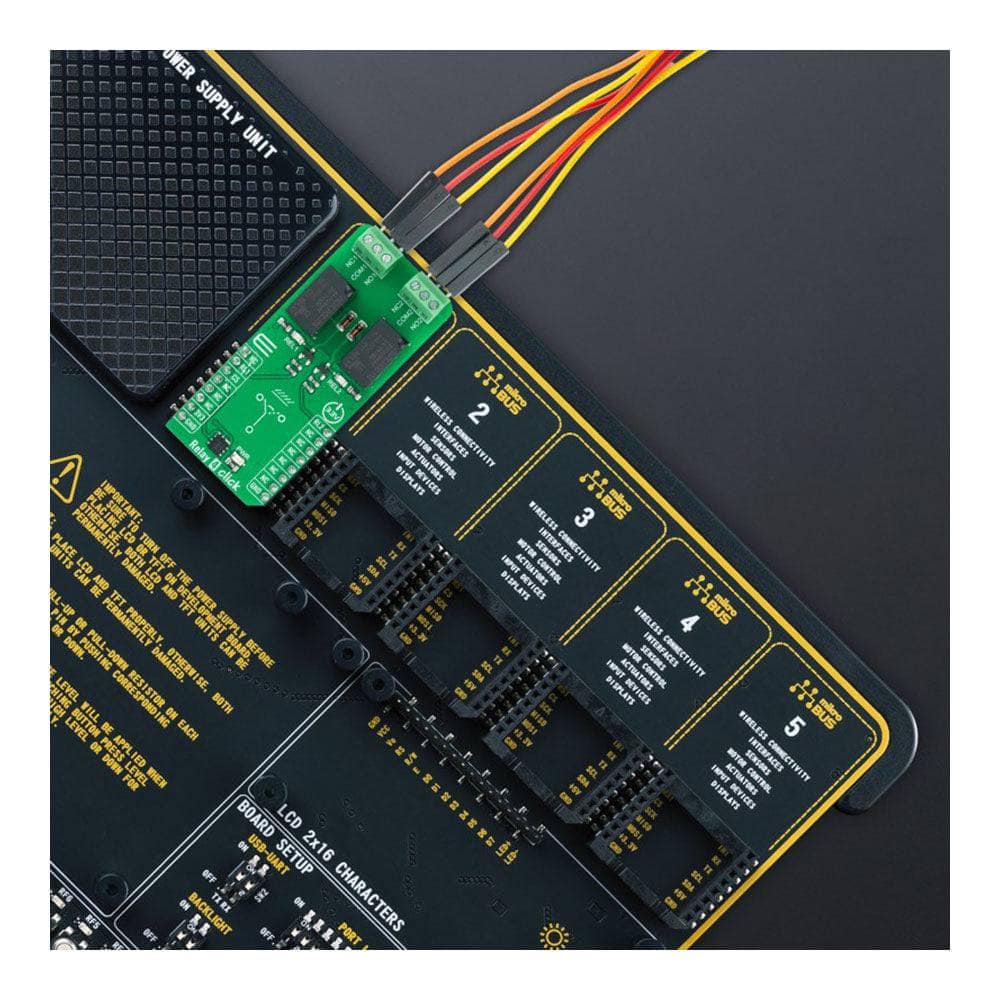
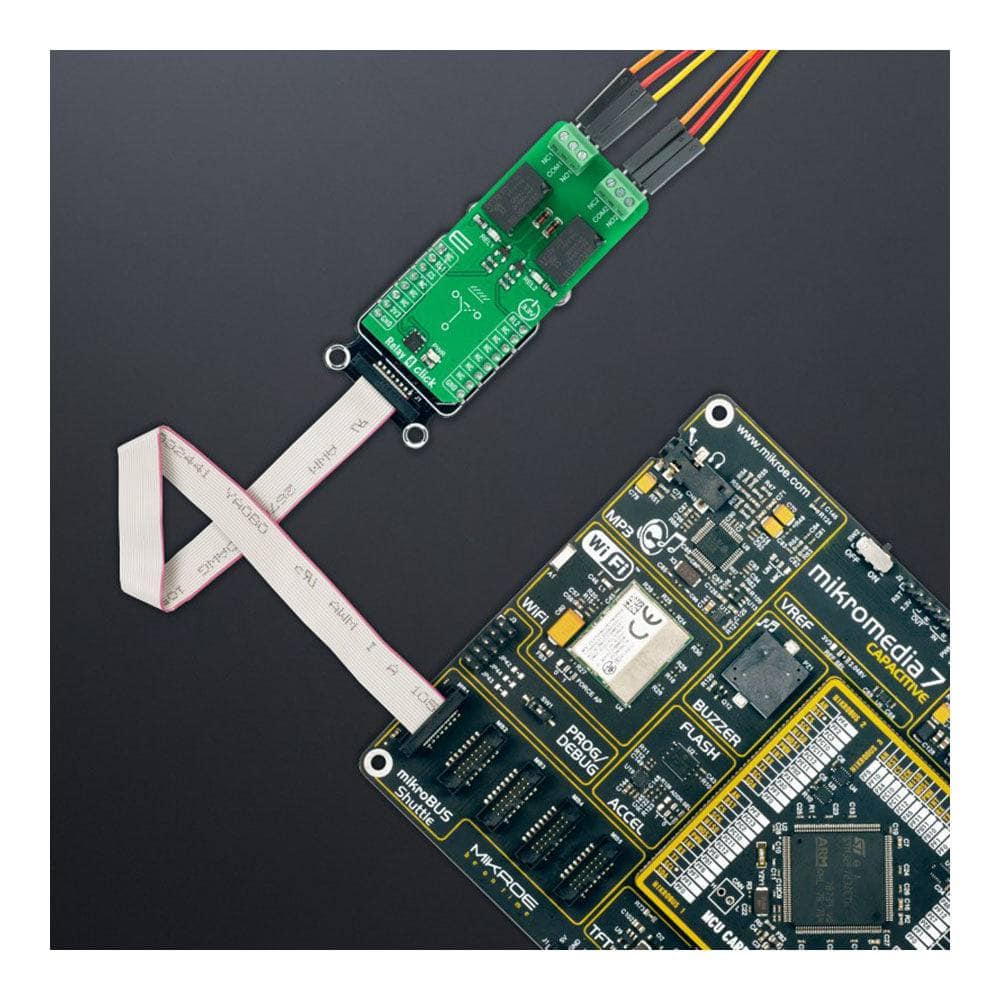

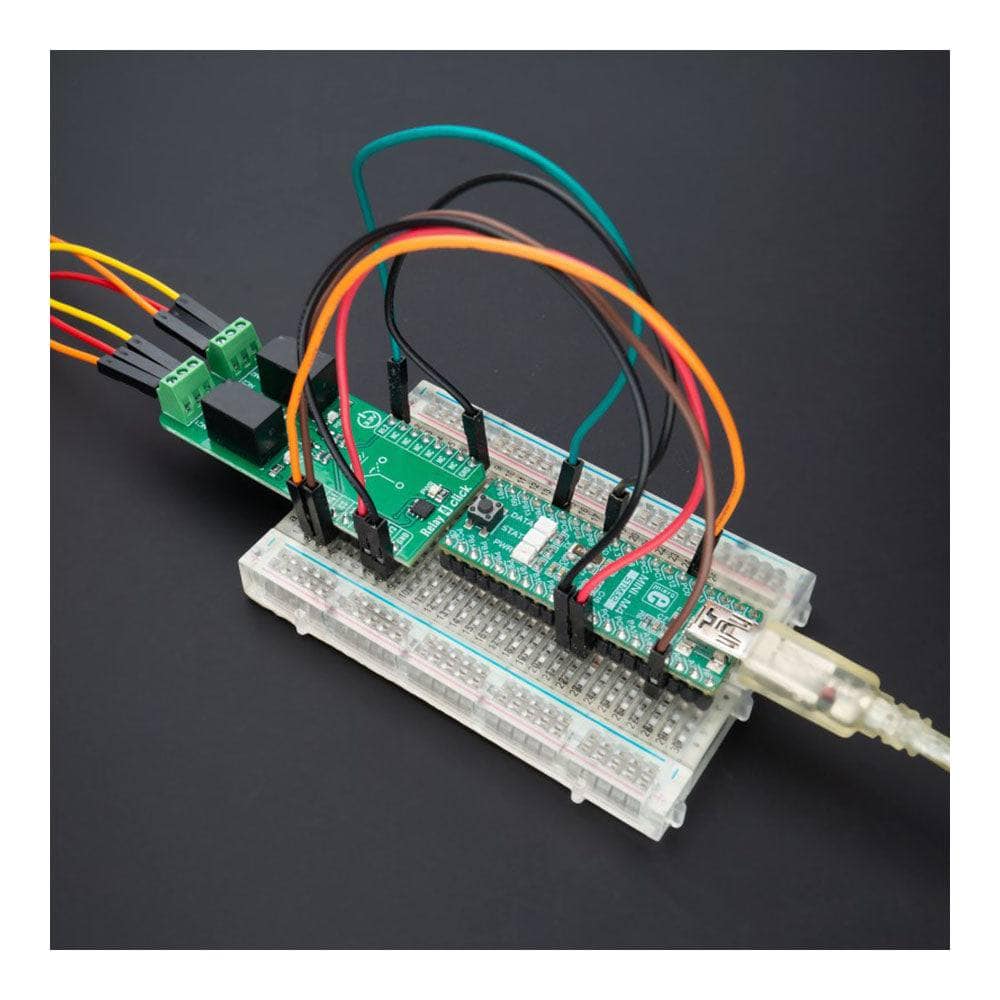
Key Features
Overview
Introducing the Relay 4 Click Board™, the compact and robust solution for controlling high-power applications. This add-on board features the J1031C3VDC, a highly sensitive and low-power consuming single-pole double-throw (SPDT) signal relay from CIT Relay and Switch. With a small and lightweight design, PC pin mounting, and a 1C contact arrangement with a coil voltage of 3VDC, this relay can handle a maximum switching voltage of 125VAC/60VDC. Measuring at just 12.5x7.5x10 millimeters (LxWxH), it's easy to integrate into any system equipped with the mikroBUS™ socket.
Plus, software development is a breeze with the included mikroSDK-compliant library and pre-tested design. Upgrade your system with the Relay 4 Click Board™ today!
Downloads
Wir präsentieren das Relay 4 Click Board™ , die kompakte und robuste Lösung zur Steuerung von Hochleistungsanwendungen. Diese Zusatzplatine verfügt über das J1031C3VDC, ein hochempfindliches und stromsparendes einpoliges Umschalter-Signalrelais (SPDT) von CIT Relay and Switch. Mit einem kleinen und leichten Design, PC-Pin-Montage und einer 1C-Kontaktanordnung mit einer Spulenspannung von 3 VDC kann dieses Relais eine maximale Schaltspannung von 125 VAC/60 VDC verarbeiten. Mit Abmessungen von nur 12,5 x 7,5 x 10 Millimeter (L x B x H) lässt es sich leicht in jedes System integrieren, das mit der mikroBUS™-Buchse ausgestattet ist.
Darüber hinaus ist die Softwareentwicklung mit der enthaltenen mikroSDK-kompatiblen Bibliothek und dem vorab getesteten Design ein Kinderspiel. Rüsten Sie Ihr System noch heute mit dem Relay 4 Click Board™ auf!
| General Information | |
|---|---|
Part Number (SKU) |
MIKROE-5539
|
Manufacturer |
|
| Physical and Mechanical | |
Weight |
0.02 kg
|
| Other | |
Country of Origin |
|
HS Code Customs Tariff code
|
|
EAN |
8606027385971
|
Warranty |
|
Frequently Asked Questions
Have a Question?
Be the first to ask a question about this.

